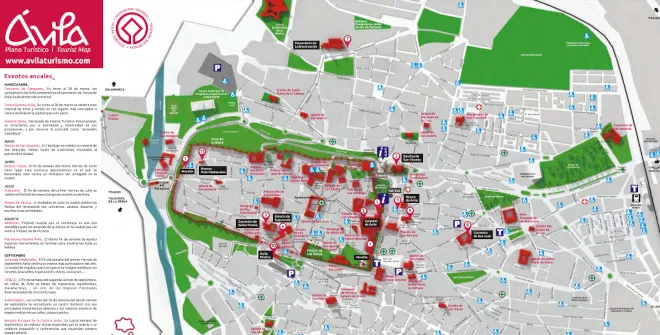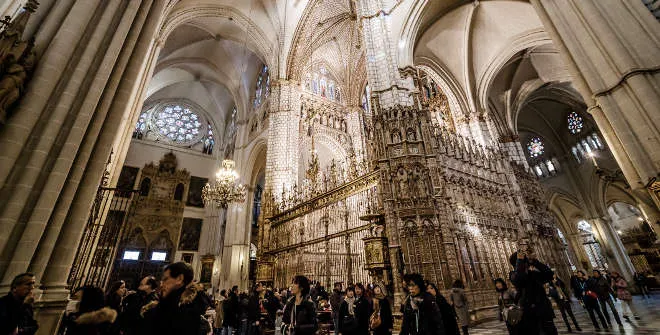Ávila
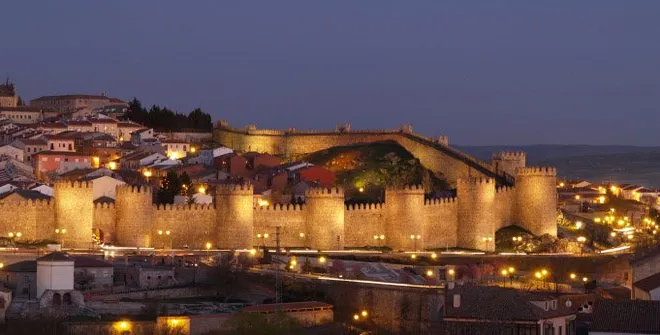
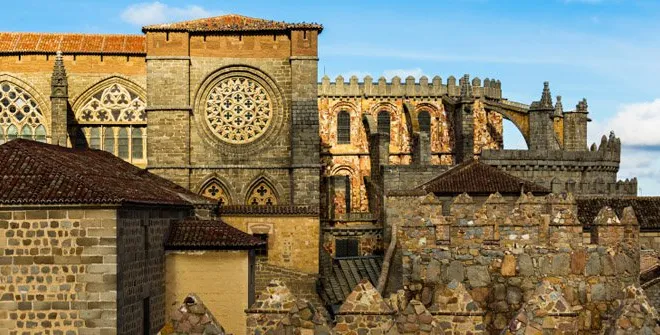
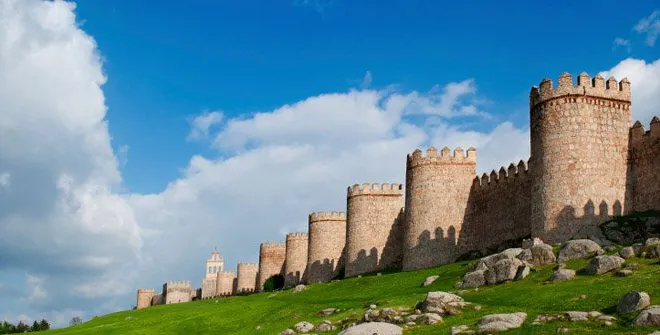
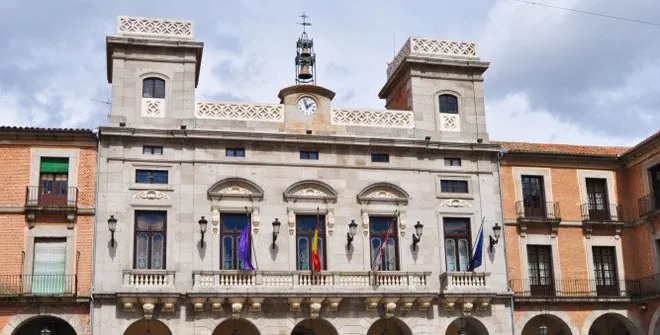
Ávila, about a 60-minute drive from Madrid, has kept a unique historical legacy. Named a World Heritage Site in 1985, this Castilian city is still enclosed by its Medieval walls, 2.5km in length. The Old Town is the fine result of fruitful interaction between the Jews, the Muslims and the Christians.
The walls
The Medieval walls, 2.5km long, are punctuated by 88 turrets and 9 gates, Puerta de San Vicente and Puerta de Alcázar being the most impressive of those guarding the Romanesque defensive rampart. You can walk along the entire perimeter of the city walls on the outer side. Activities include ‘Theatre in the City Walls’, “Legendary Guided Tours’, ‘Medieval Festivals”, and others.
Ávila Cathedral
The apse of the Cathedral actually forms part of the walls, which reminds us of its defensive nature. The interior contains Romanesque sections, while the newer ones show a Gothic style. In fact, Ávila was among the first Castilian towns to use Gothic elements.
Other sights of interest
- Los Cuatro Postes (The Four Posts). The so-called four poles (actually, four Doric columns). They’re a viewpoint affording unique views of the city.
- Basilica of San Vicente. This basilica is Ávila’s most outstanding Romanesque church.
- Basilica of San Pedro. It stands out for its unusual red stone and its Cistercian rose window.
- Church of Santo Tomé El Viejo. A Romanesque church within the Museum of Ávila, it contains a fabulous archaeological exhibition.
- Church of San Andrés. An unusual example of Ávila’s Romanesque architecture.
- Church of San Martín. Featuring the most original belfry tower in town, the brick and ashlar exterior endows the structure with an unmistakable Mudéjar character.
- Church of Nuestra Señora de la Cabeza. A church with the east end in granite, aisles with brick walls and apse chapels with really unique arches.
- House of Gómez Dávila or Valderrábanos Palace. Converted to a hotel, the house has a Gothic façade from the fifteenth century, decorated with figures, and a tower rebuilt in 1877.
- Royal Monastery of Santo Tomás. Some way from the centre, this Dominican convent is an emblematic monument and the home of the Asian Art Museum.
- St Teresa Convent and Museum. Standing on the site where St Teresa of Ávila’s birthplace used to be, this convent features a crypt that is quite unique in the history of religious architecture in Spain.
- House of Los Deanes. This traditional house is home to the Provincial Museum, showing valuable archaeological exhibits.
Guided tours
There are several guided and dramatised visits that are organised in order to discover the city through programmes like “St Teresa’s Train’, ‘The City Walls by Night’, ‘Legendary Ávila’, ‘Ávila and Its Noble Mansions’ or ‘Ávila, a World Heritage City’, Organise your visit by consulting the Ávila Official Tourist Guides.
City of Avila Medieval Fair - "The Market of Three Cultures"
During the first weekend of September, the streets of Ávila will be going back to the Middle Ages as they host the city’s popular medieval fair. The streets of the city are decked out to welcome thousands of visitors who will enjoy parades, tournaments, shows, food, music and fun. This annual event, which is also known as “The Market of Three Cultures”, fills the streets of the city with Moors, Christians and Jews, minstrels, merchants and sheriffs, accompanied by the residents of Ávila who help to make this the most important event in the city.
Named a Festival of Regional Tourist Interest in September 2017, it is one of the most spectacular medieval fairs in Spain due to its original and varied recreation of period activities and its authentic backdrop: the 12th century city walls, which are adorned for this special event that harks back to the times of archers, merchants, and maidens.
Easter in Ávila has been designated as a Fiesta of National Tourist Interest. The processions are held with sobriety and solemnity, and religious devotion is in the air. Parades run alongside the city walls and around the older buildings. Easter highlights include the Stations of the Cross, the Seven Last Words sermon and procession of El Pradillo.
The feasts honouring the local patron saints offer a great chance to get deep into Ávila’s customs and traditions. The most outstanding are the feasts of Saint Secundus on 2 May and Saint Teresa on 15 October. The streets get filled with big-headed figures, traditional dances and religious services. The fiesta reaches its peak with the bullfights, concerts and firework shows.
Rooted in the coexistence of three cultures in the Iberian Peninsula, local cuisine makes use of the diversity and quality of the local produce.
The most typical, and tastier, local products are legumes, especially cowpeas, white or red beans from El Barco de Ávila with designation of origin, and chickpeas from La Moraña. Going out for tapas can be a great plan in Ávila. Tip of advice: grab a few tapas with pork loin or chorizo.
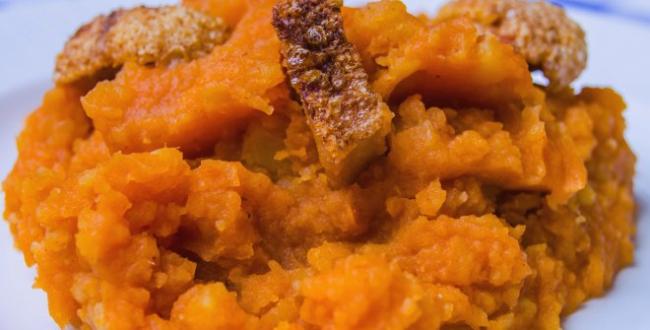
The restaurants in Ávila serve homemade food like patatas revolconas (dish made with potatoes, chorizo and bacon) and meat – roasted, grilled or charcoal-grilled. The star dishes, though, are suckling pig and T-bone steak, but you’ll also want to taste good fish caught in the rivers Tormes and Alberche. Fried, baked or pickled trout can be mouth-watering. Wonderful wines are those made in Cebreros and El Tiemblo.
If you have a preference for sweetmeats, you should try yemas (egg yolks). There are other choices, too: huesillos (sweet sticks), torrijas (French toast), amarguillos (bitter almond cookies), natillas (milk and egg custard), empiñonados (small cakes made with marzipan and pine nuts) or jesuitas (sweet pastries filled with cream).
Some of the restaurants where you can savour the typical dishes of the area are La Tahona de Sotillo and El Rincón del Jabugo, famous for its T-bone steak from Avila and owned by the famous ham cutter, Floren Sanchidrián. DegustÁvila is a tasting menu for two, featuring typical dishes prepared with traditional local ingredients.
A few kilometres from Sistema Central, on the border of the northern plateau, Ávila was in dispute between the Christian kingdoms of León and Castile, and the Muslim-ruled kingdoms of the south from the eight to the tenth century. The walls, which remain a landmark of Ávila to this day, were erected in this period.
When Ávila passed to the hands of the Crown of Castile, the city enjoyed a period of prosperity and had a vote in the Cortes (parliament), just like Segovia and Toledo, but its golden age only came in the early sixteenth century. Two of the most prominent Spanish intellectuals and theologians – as well as extraordinary poets –, Saint Teresa of Ávila and Saint John of the Cross, founders of the Order of Discalced Carmelites, were born in Ávila.
In the seventeenth century, Ávila experienced notable population loss, so much so that in the nineteenth century, Romantic writers saw it as a symbol of Spanish decline. Currently, Ávila is the capital of one of the nine provinces that make the Region of Castile-León.
- By car: Ávila is a 60-minute drive from Madrid if you take the A-6 motorway.
- By bus: The journey from Estación Sur de Autobuses (Méndez Álvaro) takes 90 minutes.
- By train: The train from Madrid - Chamartín - Clara Campoamor Station arrives in Ávila in 85 minutes
Links of Interest:
- Official Website Ávila City Council
- Guided Visits – Ávila Tourism
Not to be mised:
- Did you know that there are also remains of Arab and Christian walls in Madrid? Visit the Christian Wall of Madrid and the Arab Wall.
Other Tourist Trains
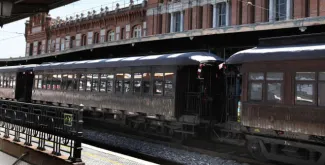
The Strawberry Train
A period train running between Madrid and Aranjuez recreates the Region of Madrid’s first rail line. Spring Season: Sat & Sun, from 22 April to 25 June.
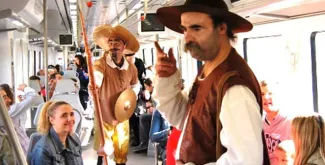
Cervantes Train
A unique way of travelling to and discovering Alcalá de Henares, the birthplace of Miguel de Cervantes. Starting on 16 April!
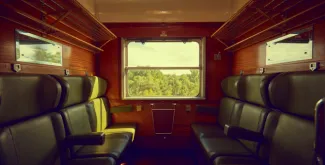
The Philip II Train
Travel from Madrid to San Lorenzo de El Escorial on a vintage train and unveil the secrets of King Philip II’s empire. Every week-end till 10 December.
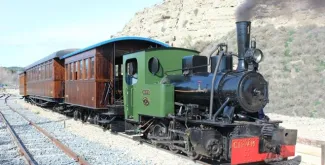
Arganda Train
Get on this vintage train whose steam locomotive pushes its way past stunning landscapes in southeast Madrid. Every Sunday, from 5 March to 28 May.
